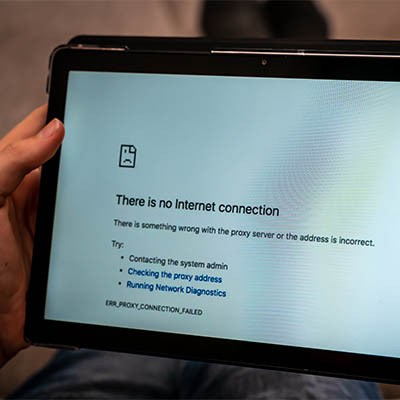JS Business Solutions Blog
The Internet Isn’t So Accessible to Everyone
When we talk about Internet accessibility (particularly as of late), we mainly focus on the idea of enabling people to use the Internet, regardless of where they may be located. While this is certainly a big issue at the present, there is another kind of accessibility that needs attention: how able those people with disabilities are to use the Internet at all.
Let’s explore the current state of this kind of web accessibility, why it matters, and what can be done about it.
The Internet’s Lack of Inclusivity
Anyone who regularly uses the Internet is aware of how frustrating a poorly designed or malfunctioning website can be. However, the negatives of this experience are exacerbated greatly for many people who also have some form of disability—and so for many, the Internet becomes a much-less-usable place.
What We Mean By “Accessibility”
In this context, the idea of web accessibility can be defined as the need for a website to have tools integrated into it that help assist a person with a disability as they navigate, perceive, and interact with the website.
To accomplish this, a few standards need to be upheld, summarized in a set of four principles known as POUR:
- Content and the overall user interface must be perceivable by everyone, accounting for those who rely primarily on visuals as well as those who require sound or tactile input.
- A website must be operable, which requires that those with limitations must be able to identify and navigate through different elements of a webpage.
- A user must also find the website understandable, with the information presented on it in such a way that the meaning is clear, and the formatting is consistent.
- Finally, a website must be robust, which here means capable of operating properly on a variety of technologies—including assistive technologies.
With the sudden implementation of social distancing measures, the importance of web accessibility was made remarkably apparent. Many of those who live with disabilities were suddenly tossed into a new environment, with new challenges coming about due to the relative inconsistency of web accessibility today.
With over one billion people alive today with some form of disability (and one out of every four Americans), this problem isn’t a small one.
It’s more than just websites too - applications and software should start to fall under similar sets of guidelines.
What We Mean By a “Disability”
When we refer to a disability, we are speaking about some condition that in some way impairs an individual’s ability to complete a given task. In terms of Internet accessibility, there are five categories that need to be considered:
- Visual disabilities, including blindness, color blindness, and low vision.
- Hearing disabilities, including deafness and hearing impairments.
- Neurological disabilities, including conditions and disorders that impact the nervous system.
- Cognitive disabilities, including those that impact attention, learning, and logic.
- Motor disabilities, including those that limit fine motor skills, slow muscles, or prevent the full use of one’s hands.
These requirements are outlined in the Web Content Accessibility Guidelines, a standard that the World Wide Web Consortium designed to establish some governance over the Internet to ensure that people with disabilities were not left out in the cold, so to speak. The WCAG is also the foundation to most accessibility legislation around the world, including Title III of the Americans with Disabilities Act (ADA), while others (like the European Standard EN 301 549 of the EU Web Accessibility Directive) incorporate the WCAG’s guidelines into its own contents.
Unfortunately, these measures aren’t as far-reaching as they may sound.
What the COVID-19 Pandemic Made Clear
Once social distancing forced so many more people online for so many more needs, the reality behind these ideals came into view.
Take, for instance, the unemployment sites run by the various state governments in the US. Based on research conducted by the Information Technology and Innovation Foundation, 86 percent of these sites failed at least one basic evaluation for mobile loading speed, mobile friendliness, or accessibility.
Other issues have become obvious as well. People who have since turned to telehealth for their medical needs or video conferencing in general have discovered that the platforms they use don’t offer key functions, like captioning services for those with hearing impairments. Videoconferencing has proven to be a lot for those with autism to manage, their energy drained by the focus it requires of them.
Furthermore, a survey conducted by Pew Research Center in 2016 revealed that adults with disabilities were about 20 percent less likely to own the technology needed—a computer or mobile device—as well as home broadband connectivity, possibly because they are more than twice as likely to live in poverty and be unemployed.
With many experts estimating that social distancing will likely persist into 2022, the services that many rely on the Internet to provide right now—from education to business services and so many others—will need to be accessible to everyone. This will in turn require that legislation like the ADA or the WCAG to be more fervently enforced and defined to ensure that everyone is able to be included in the online space.
Of course, this concern is far too big to cover in a single blog post, and with every layer that is peeled back it gets more and more complex. One thing is clear—the Internet, for all its capabilities, isn’t equitable in how these capabilities are made available… a concern that it is important to fix.




Comments